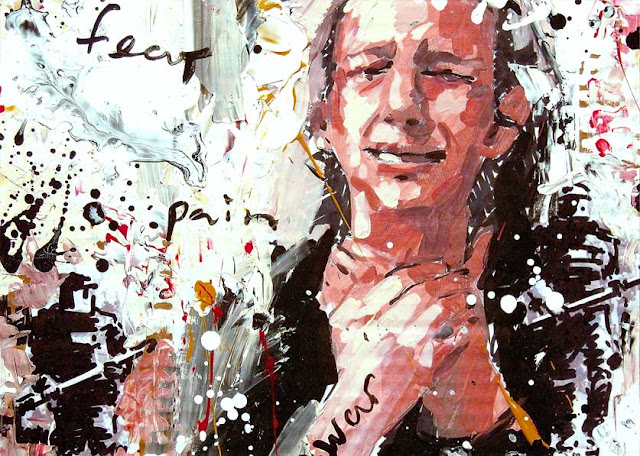Untitled #1, 30" X 30", oil on canvas, 2010, Maxim Grunin
My work's transition from representational to none objective began after my graduation from the masters program at The University of Waterloo, Ontario. I came to Canada as an immigrant from Russia where I was classically trained. Art education in the West was quite different from what I have experienced as an art student back home. Russian artists were taught in the rigorous tradition of the old masters such as Rembrandt or Michelangelo. They had to exhibit formal excellence in studio arts approach. The mastery of the realism with it's naturalistic representation were regarded as necessary professional traits for artists.
Untitled #2, 30" X 30", oil on canvas, 2010, Maxim Grunin
The art education here had significantly less focus on the formal skills in drawing, painting and sculpting. Instead of the unified standard for polished excellence of craftsmanship we had the multitude of narrow specializations. Students were given the freedom to try many subjects in the realm of visual arts without having to perfect their ability as painters or drawers in a classical sense. For example, someone who entered the undergraduate program with a portfolio of drawings and paintings could end up majoring in photography or design four years down the road. Students were graded based on their individual progress. It seemed funny to me when a student who could not complete a simple exercise in realistic drawing would get a high mark for creating a conceptually potent none objective piece in a studio course. This never would have happened back in Russia because any candidate who could not exhibit a formal training and a fine ability in all studio disciplines would not even be permitted to enroll in a university art program.

Untitled #3, 30" X 30", oil on canvas, 2010, Maxim Grunin
I had to adopt to the new system where pupils of very different educational backgrounds gathered within the institutions to discover many new approaches and technologies used in contemporary art. We were compelled to develop our own modes of production in visual art while having no concrete example of excellence. Students would naturally gravitate to the disciplines they liked and had the potential for. My advanced knowledge in studio art foundation lead me to a teaching career. The demand in skilled and qualified art instructors was always there. There were community art programs for children and students of different ages. For nearly eight years I was teaching classes in drawing and painting. Being bilingual and having classical background in art education made me an asset for private art schools in Canadian-Russian community.
My studio practice evolves. I strive to achieve higher merits as a painter and continuously develop new symbolism as well as new modes for creating. Expressive qualities of the medium: surface, paint application, color and contrast become more interesting then naturalistic subject portrayal. In this body of my work the realism disappears all together.













































